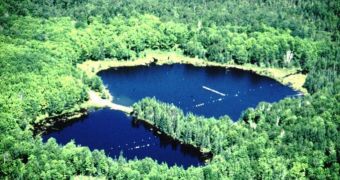A group of investigators in the United States has recently demonstrated that it's possible to detect significant changes affecting ecosystems before they happen. This early detection method could be used to determine which habitats are the most likely to experience ecological catastrophes.
University of Wisconsin-Madison (UWM) scientists analyzed signals collected from inside a remote Wisconsin lake, and determined that this particular ecosystem is on the brink of collapse. They also found that the loss of this habitat is unavoidable.
However, the research did evidence some factors that could be used for predicting other ecosystems' risk of suffering the same fate. Details of the investigation were published in the latest issue of the top journal Science. The research team was lead by UWM expert Stephen Carpenter.
Using the conclusions set forth by this study, ecologists could finally develop methods for predicting the risk of collapse in a particular habitat or ecosystem. There are multiple factors to consider when doing so, but the new work evidenced some of the most important ones.
This research was carried out using funds provided by the US National Science Foundation (NSF). According to Carpenter, the study carries numerous implications for the future.
“For a long time, ecologists thought these changes couldn't be predicted. But we've now shown that they can be foreseen. The early warning is clear. It is a strong signal,” the expert argues.
“This research shows that, with careful monitoring, we can foresee shifts in the structure of ecosystems despite their complexity,” adds NSF Division of Environmental Biology program director Alan Tessier.
“The results point the way for ecosystem management to become a predictive science,” he adds.
Using the new study as a starting point, experts could monitor the “vital signs” of fragile ecosystems, and determine the maximum limits beyond which damages can no longer be recovered from.
“With more work, this could revolutionize ecosystem management. The concept has now been validated in a field experiment and the fact that it worked in this lake opens the door to testing it in rangelands, forests and marine ecosystems,” Carpenter explains.
He explains that the Wisconsin lake was monitored for three years before the relevant vital signs became apparent to researchers. The team also included experts from the Cary Institute of Ecosystem Studies, the University of Virginia in Charlottesville and the St. Norbert College.

 14 DAY TRIAL //
14 DAY TRIAL //